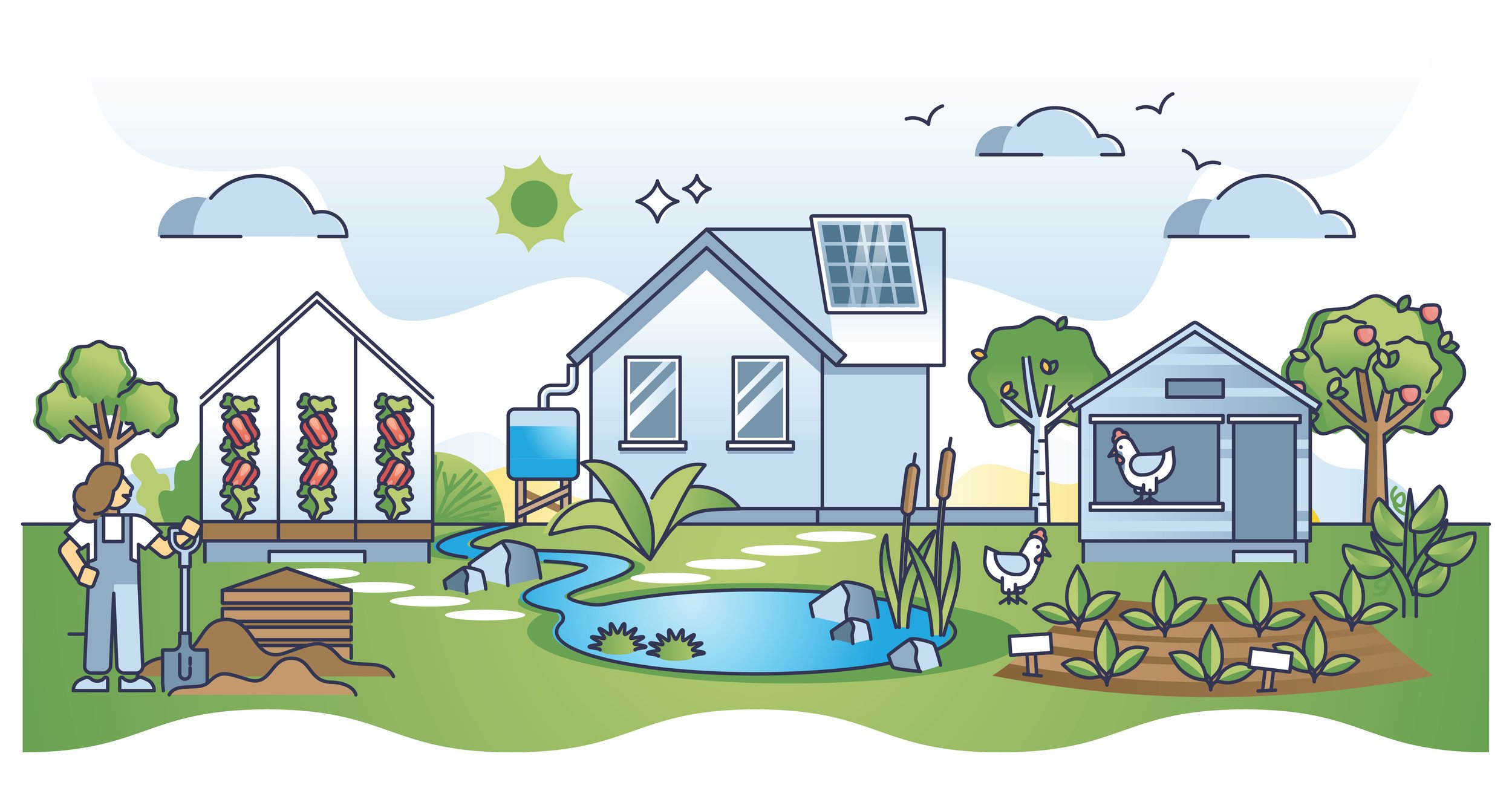Sustainable Homesteading: A complete guide
/Imagine waking up to the gentle chorus of your own backyard, the sun casting a warm, golden glow over your flourishing garden. This isn't just a scene from a rustic daydream. It's the essence of sustainable homesteading—a lifestyle that puts you in the driver's seat of your own life.
Here, every plant you nurture and every resource you conserve stitches a deeper connection between you and the land. You're not just living on the earth. You're working hand in hand with it, crafting a legacy of sustainability and self-sufficiency.
Welcome to a journey where every step you take is a stride towards a greener, more grounded life. It's time to turn that vision into your reality.
Embracing Solar Power
In embracing solar power, you're not just investing in your homestead. You're investing in a sustainable future. Solar power residential systems offer an efficient way to harness the sun's abundant energy, significantly reducing your reliance on non-renewable resources.
By making this choice, you not only lower your utility bills but also contribute to a cleaner, greener environment. Remember, transitioning to solar isn't just a practical decision; it's a statement of your commitment to a lifestyle that respects and preserves the natural world.
Cultivating Your Garden
Cultivating a garden is an essential part of sustainable homesteading. Begin with selecting crops that are well-suited to your local climate, focusing on those that are easy to grow and maintain. It's crucial to approach your garden as a thriving ecosystem. This means employing organic gardening techniques to enrich the soil, conserve water, and promote biodiversity.
Furthermore, utilize natural fertilizers and pest control methods to maintain the health of your plants. A well-tended garden not only provides you with fresh produce but also contributes to the ecological balance of your homestead. Your commitment to nurturing this space reflects your dedication to a sustainable lifestyle.
Raising Livestock Responsibly
Just as your garden needs care, so do your animals. Raising livestock requires space, time, and a commitment to humane and sustainable practices.
Choose breeds that adapt well to your local conditions, ensuring they have sufficient space and access to natural food sources. This not only supports their health but also promotes biodiversity on your homestead.
Engage in humane practices, providing shelter, clean water, and appropriate care.
Remember, the health of your livestock directly influences the health of your homestead and the environment.
Preserving Your Harvest
After reaping the rewards of your garden and livestock, it's time to preserve your bounty. It emphasizes the importance of extending the shelf life of your produce through methods like canning, drying, and freezing.
This practice not only minimizes waste but also ensures a constant supply of homegrown food throughout the year, reducing your reliance on store-bought items. By adopting these preservation techniques, you contribute to the sustainability of your homestead, ensuring that every bit of your hard work pays off, season after season.
Building With Sustainability in Mind
Your homestead's structures, from your home to your chicken coop, should reflect your sustainable ethos. Opt for local, renewable, or upcycled materials that minimize environmental impact. Design your living spaces to harness natural light, ensuring energy-efficient lighting and heating.
Proper insulation is crucial; it maintains indoor temperatures, reducing the need for excessive heating or cooling. Consider the orientation of your buildings, maximizing sun exposure in colder months and shade during warmer periods.
Harnessing Water Wisely
Water is a precious resource on any homestead. Start by installing a rainwater collection system to capture and store water for your garden and livestock. Consider the layout of your land and use gravity to your advantage, minimizing the need for pumps.
In your garden, opt for drip irrigation or soaker hoses to deliver water directly to the roots where it's most needed, reducing evaporation and waste. Mulch your plants to retain soil moisture and reduce watering frequency.
Always be mindful of your water usage, fixing leaks promptly and choosing water-efficient fixtures for your home. By adopting these practices, you'll maximize your water efficiency, ensuring that every drop supports your homestead's thriving ecosystem.
Engaging With Your Community
Engaging with your community enriches your homesteading experience. Reach out to fellow homesteaders, local farmers, and sustainable living groups. Attend workshops, share your harvest, and participate in community-supported agriculture.
By doing so, you'll forge valuable connections, exchange diverse knowledge, and access local resources. Embrace this collaboration; it's a cornerstone of successful, resilient homesteading.
Parting Thoughts
Sustainable homesteading is a journey, not a destination. It's about making thoughtful, deliberate choices every day to live in harmony with nature. As you embark on this path, remember that every small step you take makes a difference. Embrace the challenges, celebrate the successes, and enjoy the profound satisfaction of building a sustainable, self-reliant life.






















